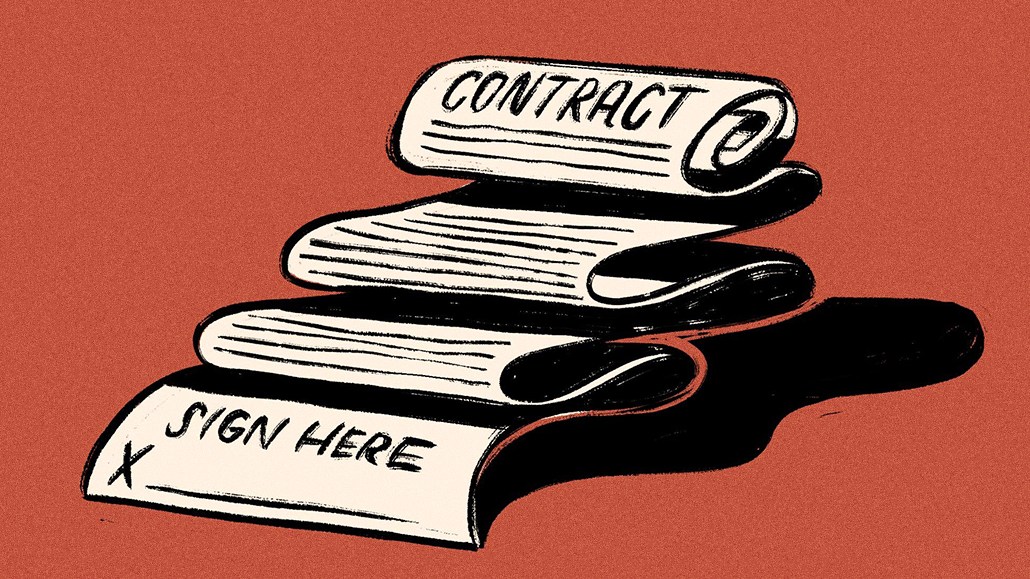As big contracts dry up for top gaming creators, smaller to mid-sized influencers see opportunity

Facing economic headwinds, platforms and esports teams alike are becoming more wary about spending millions of dollars to work with popular gaming creators — creating an opportunity for smaller to mid-sized creators to take advantage.
For years, scoring big contracts with platforms and esports orgs has been gaming creators’ ideal endgame scenario. Streaming platforms have jockeyed for top talent, offering creators splashy exclusivity deals worth tens of millions to convince their fans to make the jump, while esports orgs have tossed multi-million-dollar salaries at top players to help juice their own streaming and social numbers.
In 2023, the top-gaming-creator gravy train might finally be coming to an end. Twitch and YouTube are reportedly pulling away from big-name streamer contracts, and esports organizations are increasingly shying away from multi-million-dollar deals as well. Earlier this year, for example, Luminosity Gaming declined to re-sign its contract with streamer Felix “xQc” Lengyel — the organization’s most famous, and most expensive, player by a significant margin — openly choosing to prioritize building relationships with less expensive talent instead.
Esports orgs’ move toward smaller to mid-sized streamers reflects broader shifts in favor of micro-influencers across the creator economy. Micro-influencers are particularly effective when they target specific communities such as gaming, making gaming and esports a natural breeding ground for this type of creator. In addition to being less expensive, smaller creators’ contracts with esports teams tend to be on a shorter-term basis as well, freeing up more cash flow for potentially distressed orgs.
Luminosity Gaming head Alex Gonzalez told Digiday that his team’s move over to smaller creators — creators earlier in their careers, with perhaps a few thousand rather than tens of thousands of subscribers — hasn’t affected its ability to sign advertisers, the lifeblood of most esports orgs.
“We’ve actually had a lot of positive impacts; we’re seeing creators really enjoy working with these brands,” Gonzalez said, citing Luminosity’s partnership with Bandai Namco, although he declined to share the financial details of the deal. “We actually did a campaign where we had four or five streamers playing the game, but five to ten of our other streamers that weren’t selected for the activation also played it, just because they really wanted to try the game. So they got almost double the added value, just from creators that were more willing to work with brands.”
The slowdown in big-figure contracts is also forcing more creators to diversify their revenue streams — and rewarding the ones who were already not reliant on esports org deals or exclusivity contracts. Instead of building toward esports org contracts in recent years, the chess creator Levy “GothamChess” Rozman focused on developing a range of other revenue streams, such as lessons, brand partnerships and a book, “How to Win at Chess,” which became a New York Times bestseller last month.
Rozman boasts millions of followers across social channels, but he is not a variety streamer like Lengyel, making him less of an obvious target for the big platforms and esports orgs that doled out lucrative contracts in past years. If big streamer contracts dry up, it won’t have a significant impact on Rozman’s bottom line.
“I was not really ever pursuing an esports contract while folks were getting them — I was just purely focused on getting the biggest YouTube channel and making money through the ad share and courses,” Rozman said. “The algorithm is not very friendly for streamers, and I completely focused on building something more sustainable, in terms of immediate revenue, but also legacy pieces, like the book.”
The slowdown in big streamer contracts in 2023 does not mean that they will be gone forever. Longtime observers of the livestreaming space understand that these contracts come in a cyclical nature, dependent on the whims of the market and the current level of competition between major streaming platforms. But it’s become clear that gaming influencers will need to get more creative with their revenue streams in 2024 to offset the ongoing decrease of splashy exclusivity deals.
“The platform content strategy and deals that are occurring around content are cyclical things,” said Brandon Freytag, chief of creator monetization for the management firm Loaded. “Sometimes you’re going to have a smaller year, sometimes you’re going to have a bigger year — it really is going to go back and forth. At this point, we’re in a place where we’re diverging all of this content in all of these places, and now we’re going to sit back and see how the audience reacts.”
More in Marketing

Pandora is betting on AI agents to scale service and emotional selling during the peak holiday season
Pandora is using AI agents to scale customer service and replicate emotional in-store selling online, just as peak season puts pressure on margins and teams.

Rembrand’s CEO wants to grow virtual ad placements in streaming, and he’s looking elsewhere for models
Omar Tawakol wants to improve advertising within the streaming world, and is working with advertisers and publishers to improve that experience.

Marketers are keen to use generative AI in ad campaigns, but hidden costs lurk
Marketers across the industry want to use AI to cut down on time spent in creative production. It’s not so simple in practice.








